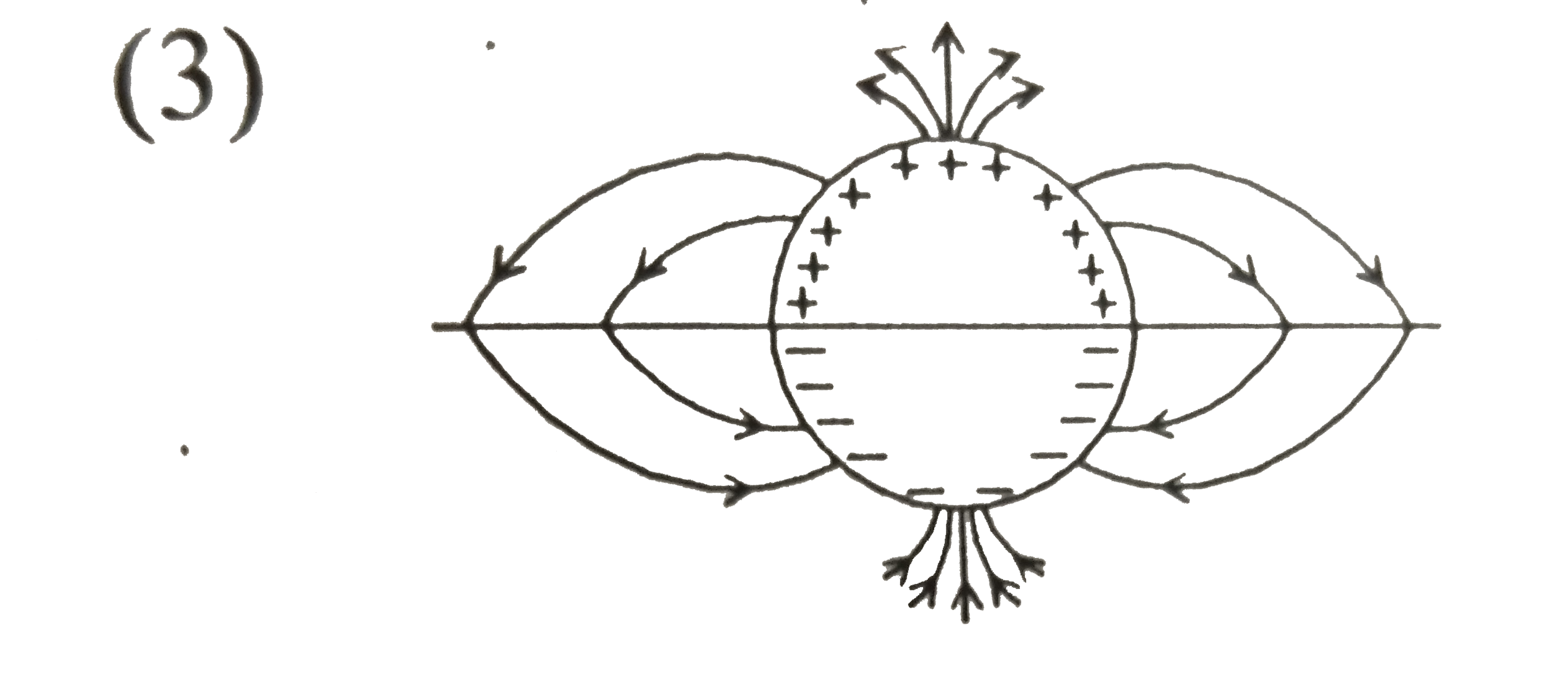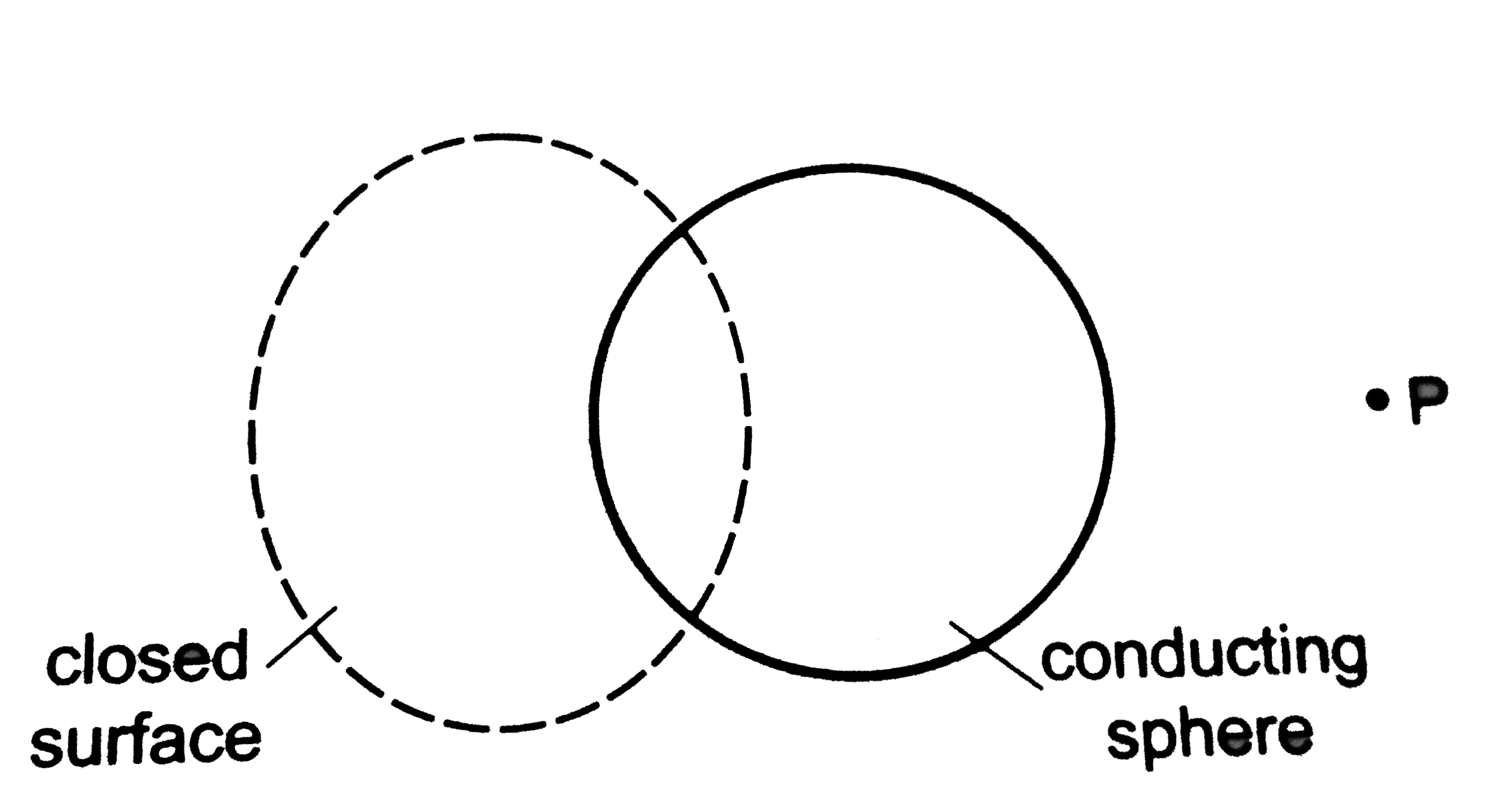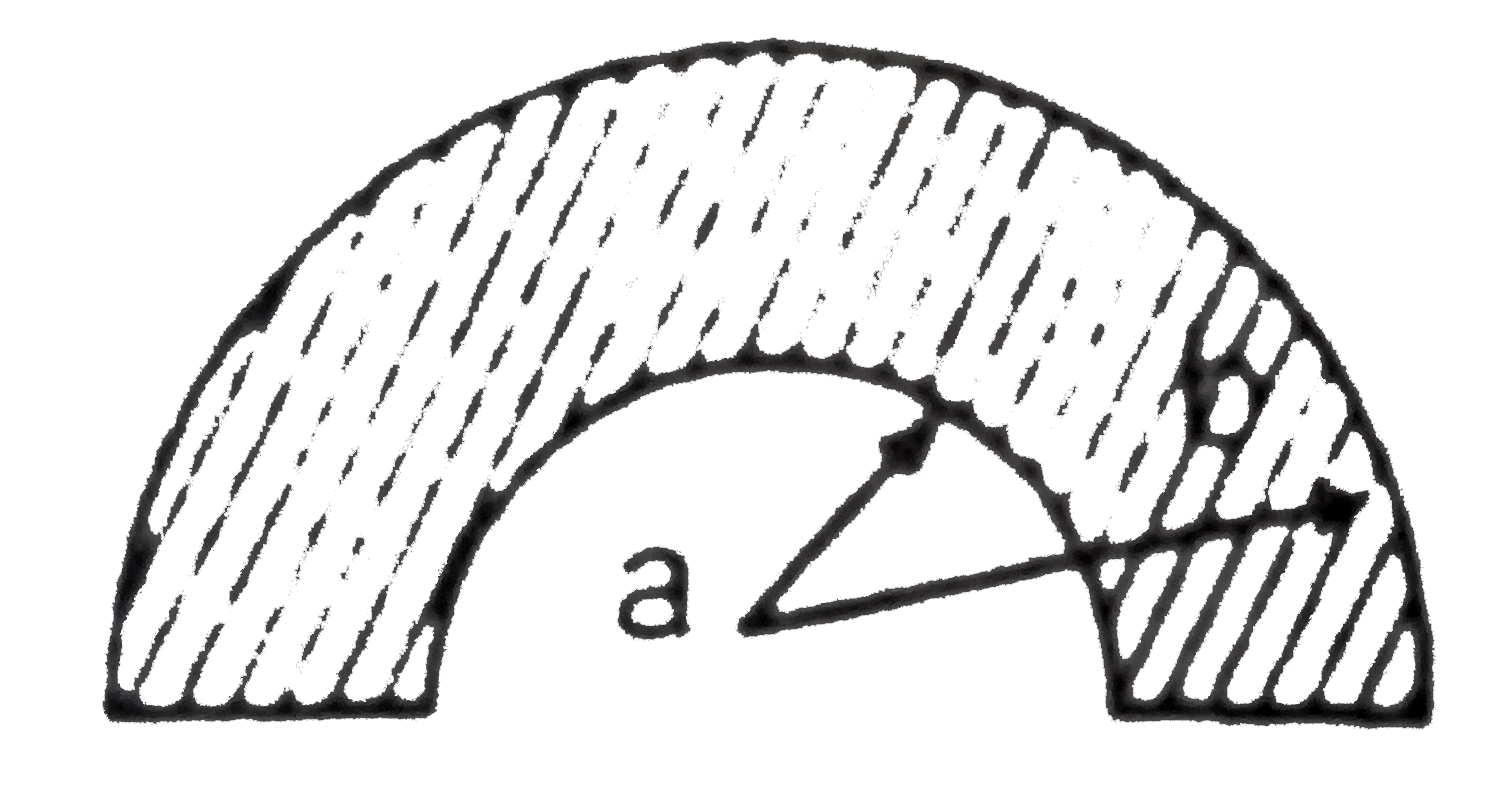A long cylindrical shell carries positive surface charge σ in the upper half and negative surface charge −σ in the lower half. The electric field lines around the cylinder will look like figure given in:(figures are schematic and not drawn to scale)




The correct Answer is:D
To solve the problem, we need to analyze the electric field created by a long cylindrical shell with a positive surface charge density σ on the upper half and a negative surface charge density −σ on the lower half.
1. Understanding the Charge Distribution:
- The cylindrical shell has a positive charge density σ on the upper half and a negative charge density −σ on the lower half. This creates an electric field due to the separation of charges.
2. Direction of Electric Field:
- The electric field lines always point away from positive charges and towards negative charges. Therefore, for this cylindrical shell:
- The electric field lines will originate from the upper half (positive charge) and will point downwards towards the lower half (negative charge).
3. Symmetry of the Problem:
- The cylindrical shell is symmetrical about its axis. This symmetry implies that the electric field lines will be uniform and radial in nature, extending outward from the surface of the cylinder.
4. Sketching the Electric Field Lines:
- The electric field lines will start from the positive surface charge and curve downwards towards the negative surface charge.
- The lines will be denser near the surface where the charge density is higher and will spread out as they move away from the cylinder.
5. Identifying the Correct Figure:
- After analyzing the electric field lines, we can compare our sketch with the given options. The correct figure will show lines emanating from the upper half and curving downwards towards the lower half.
6. Conclusion:
- Based on the analysis, the correct option that represents the electric field lines around the cylinder is option 4.
- The cylindrical shell has a positive charge density σ on the upper half and a negative charge density −σ on the lower half. This creates an electric field due to the separation of charges.
- The electric field lines always point away from positive charges and towards negative charges. Therefore, for this cylindrical shell:
- The electric field lines will originate from the upper half (positive charge) and will point downwards towards the lower half (negative charge).
- The cylindrical shell is symmetrical about its axis. This symmetry implies that the electric field lines will be uniform and radial in nature, extending outward from the surface of the cylinder.
- The electric field lines will start from the positive surface charge and curve downwards towards the negative surface charge.
- The lines will be denser near the surface where the charge density is higher and will spread out as they move away from the cylinder.
- After analyzing the electric field lines, we can compare our sketch with the given options. The correct figure will show lines emanating from the upper half and curving downwards towards the lower half.
- Based on the analysis, the correct option that represents the electric field lines around the cylinder is option 4.
Topper's Solved these Questions
Similar Questions
A long thin flat sheet has a uniform surface charge density σ. The magnitude of the electric field at a distance .r. from it is given by
View SolutionFigure shows the electric field lines around three point charges A,B and C. Which of the following charges are positive?

View SolutionA conductor with a cavity is charged positively and its surface charge density is σ. If E and V represent the electric field and potential, then inside the cavity
View SolutionFigure shown a closed surface which intersects a conducting sphere. If a positive charge is placed at the point P, the flux of the electric field through the closed surface

View SolutionFigure shown a closed surfce which intersects a conducting sphere. If a positive charge is placed at the point P, the flux of the electric field through the closed surface

View SolutionThree non-conducting large parallel plates have surface charge densities σ,−2σand4σ respectively as shown in the figure. The electric field at the point P is

View SolutionA non-conducting semi circular disc (as shown in figure) has a uniform surface charge density σ. The ratio of electric field to electric potential at the centre of the disc will be

View SolutionThe linear charge density on upper half of semi-circular section of ring is λ and that at lower half is −λ. The direction of electric field at centre O of ring is :

View SolutionFigure shows sone equipotential surfaces produce by some charges. At which point, the value of electric field is greatest ?

View SolutionA positive point charge q is placed at a distance 2 R from the surface of a metallic shell of radius R. the electric field at centre of shell due to indouced charge has magnitude

View Solution
